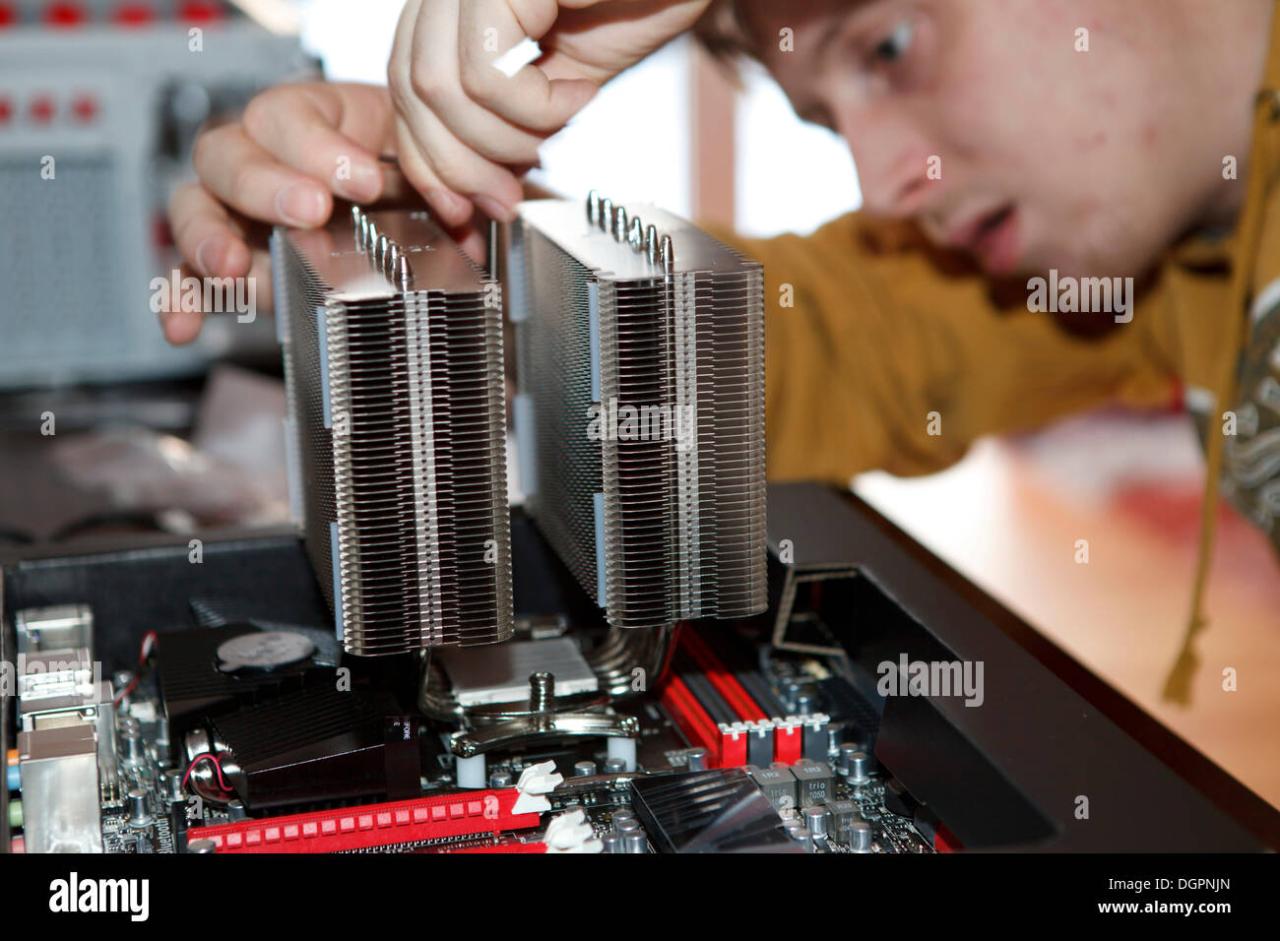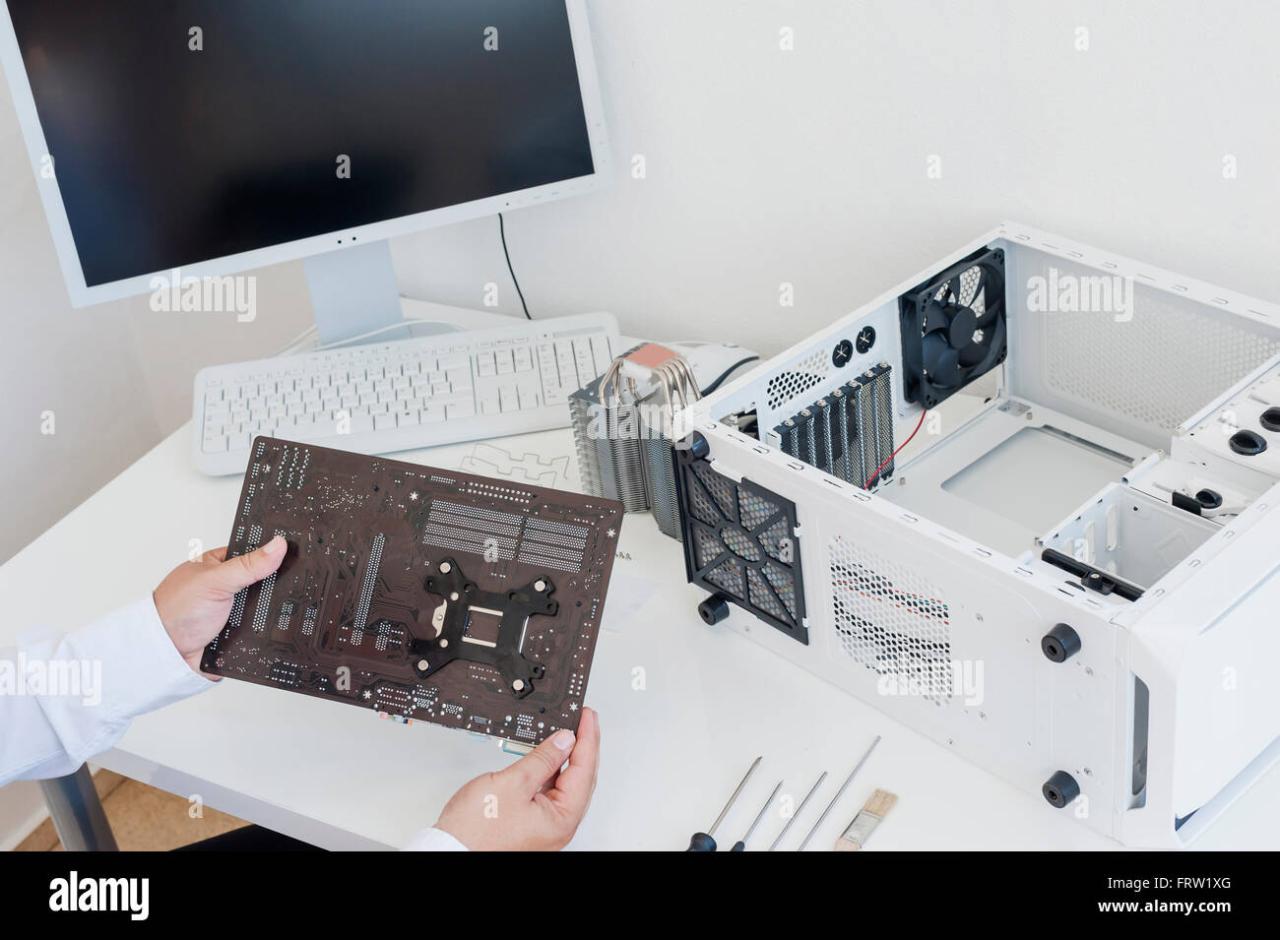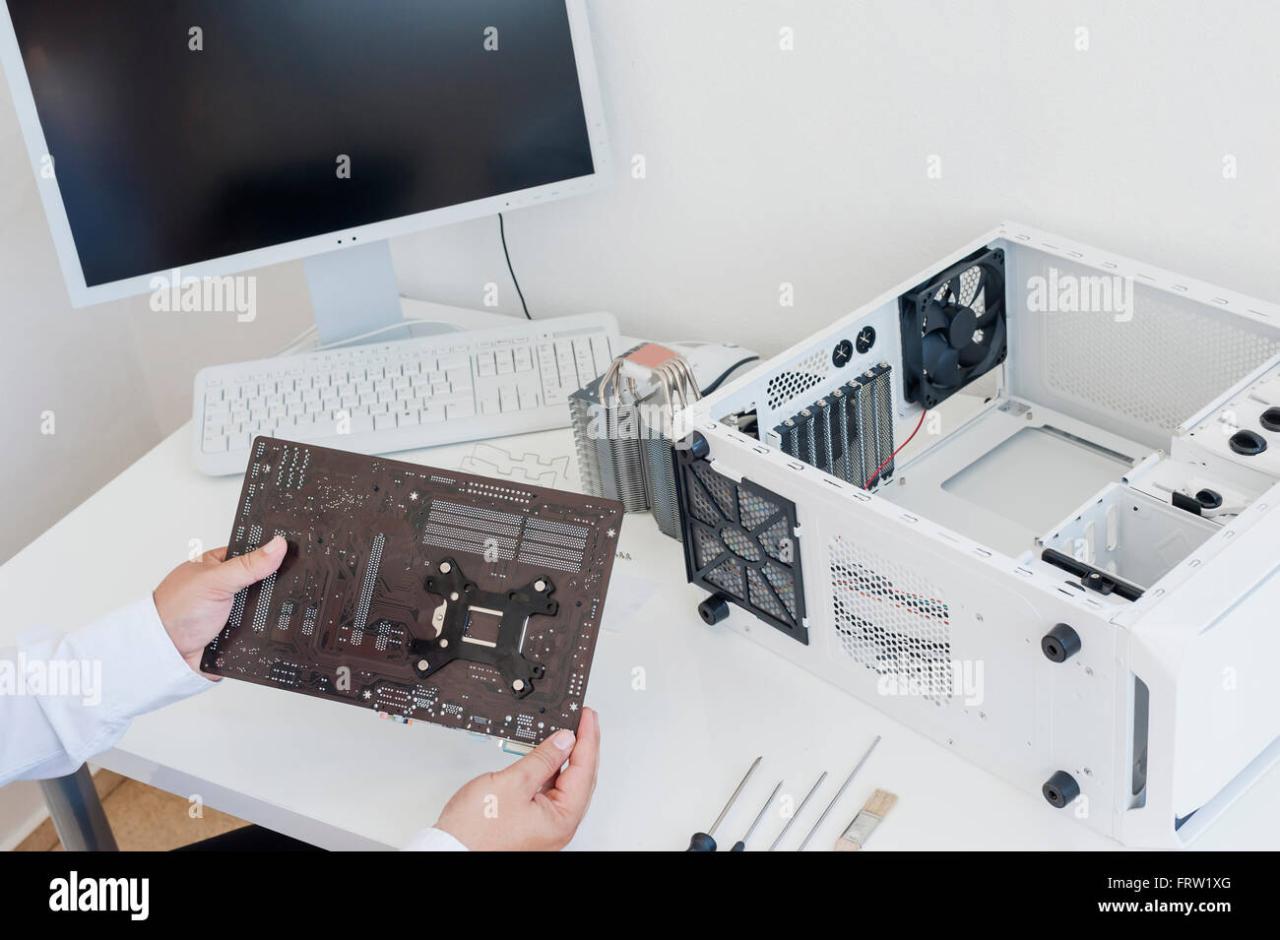PC Builder: Dive into the exciting world of crafting your dream computer! Building your own PC isn’t as daunting as it seems. This guide breaks down the process step-by-step, from choosing the right components to troubleshooting potential issues. Get ready to learn the skills and knowledge needed to build a powerful, personalized machine tailored to your exact needs and budget.
We’ll cover everything from understanding the building process and selecting compatible components to mastering cable management and troubleshooting common problems. Whether you’re a complete beginner or have some experience, this guide will empower you to confidently assemble your own high-performance PC.
Understanding the PC Building Process
Building your own PC can seem daunting, but breaking it down into manageable steps makes the process straightforward. This section Artikels the process, essential components, necessary tools, and potential pitfalls to avoid.
Step-by-Step PC Building Process, Pc builder
The PC building process involves a series of steps, each crucial for a successful build. Careful planning and attention to detail are key to a smooth experience.
| Step Number | Task | Required Tools | Potential Issues |
|---|---|---|---|
| 1 | Prepare the Workspace | Anti-static wrist strap, well-lit area | Static electricity damage |
| 2 | Install CPU | CPU installation lever, thermal paste | Bent pins, incorrect orientation |
| 3 | Install CPU Cooler | Screwdriver, thermal paste | Improper mounting, insufficient thermal paste |
| 4 | Install RAM | None | Incorrect slots, improper seating |
| 5 | Install Motherboard into Case | Standoffs, screws | Short circuits, improper grounding |
| 6 | Install Storage Devices (SSD/HDD) | Screws | Incorrect connection, loose screws |
| 7 | Install Graphics Card | None | Improper seating, damage to PCIe slot |
| 8 | Connect Power Supply | None | Incorrect cable connections, insufficient wattage |
| 9 | Cable Management | Zip ties, cable combs | Poor airflow, aesthetics |
| 10 | Initial Boot and BIOS Setup | Monitor, keyboard, mouse | No display, boot errors |
Importance of PC Components
Each component plays a vital role in the overall performance and functionality of your PC. Understanding their functions is crucial for making informed choices.
- CPU (Central Processing Unit): The brain of the computer, responsible for processing instructions.
- Motherboard: Connects all components together.
- RAM (Random Access Memory): Temporary storage for data the CPU actively uses.
- Storage (SSD/HDD): Permanent storage for operating system, programs, and files.
- GPU (Graphics Processing Unit): Handles image processing, crucial for gaming and graphics-intensive tasks.
- Power Supply Unit (PSU): Provides power to all components.
- Case: Houses and protects all internal components.
Tools and Equipment for PC Building

Having the right tools ensures a smooth and safe build. Anti-static precautions are essential to prevent damage to sensitive components.
- Phillips head screwdriver
- Anti-static wrist strap
- Zip ties or Velcro straps (for cable management)
- Thermal paste (for CPU cooler)
- Well-lit workspace
PC Building Checklist
A checklist helps ensure you don’t miss any crucial steps during the build process.
- Prepare your workspace.
- Install the CPU.
- Install the CPU cooler.
- Install RAM.
- Mount the motherboard.
- Install storage devices.
- Install the graphics card.
- Connect the power supply.
- Manage cables.
- Boot the system and check BIOS settings.
Choosing PC Components
Selecting the right components is crucial for achieving your desired performance and budget. This section explores key factors to consider for each major component.
CPU: Intel vs. AMD
Both Intel and AMD offer high-performance CPUs. The best choice depends on your budget and specific needs. Intel often boasts slightly higher single-core performance, while AMD frequently provides better multi-core performance at a lower price point.
Motherboard Selection
The motherboard is the foundation of your PC. Consider the CPU socket compatibility, chipset, RAM type and speed, expansion slots (PCIe, M.2), and form factor (ATX, micro-ATX, ITX).
RAM Selection
RAM speed and capacity directly impact system responsiveness. For general use, 16GB is often sufficient, while gaming and content creation may benefit from 32GB or more. Faster speeds (3200MHz or higher) improve performance.
Storage: SSD vs. HDD
SSDs offer significantly faster read/write speeds compared to HDDs, resulting in quicker boot times and application loading. HDDs provide higher storage capacity at a lower cost per gigabyte.
Graphics Card Selection
Graphics card selection heavily depends on your budget and gaming resolution/performance goals. Higher-end cards offer better performance at higher resolutions and frame rates.
PC Building Best Practices
Proper techniques and attention to detail are essential for optimal performance and longevity. This section covers cable management, component installation, and common mistakes to avoid.
Cable Management Techniques
Neat cable management improves airflow, reducing component temperatures and improving system stability. Use zip ties, Velcro straps, and cable combs to organize cables.
Proper Component Installation
Careful installation is crucial to avoid damage. Refer to your motherboard and component manuals for detailed instructions.
- CPU Installation: Ensure proper alignment and gentle pressure.
- RAM Installation: Push firmly until the clips click into place.
- GPU Installation: Ensure the card is fully seated in the PCIe slot.
Common Mistakes and Solutions
Novice builders often encounter issues like incorrect RAM installation, improper grounding, or insufficient thermal paste.
- Incorrect RAM installation: Double-check the slots and ensure the RAM is firmly seated.
- Improper grounding: Ensure the case is properly grounded to prevent static discharge.
- Insufficient thermal paste: Apply a pea-sized amount of thermal paste to the CPU.
Optimizing PC Performance
After the build, optimize performance by updating drivers, installing necessary software, and monitoring temperatures.
Essential Safety Precautions

Safety is paramount during the PC building process. Always follow these precautions:
- Use an anti-static wrist strap.
- Work in a well-lit area.
- Avoid touching components unnecessarily.
- Power down the system before working on internal components.
- Unplug the power supply before opening the case.
Troubleshooting PC Builds
Troubleshooting is an inevitable part of the PC building process. This section Artikels common problems, their causes, and solutions.
Common Boot Problems
Boot problems often stem from issues with the CPU, RAM, or boot drive. Check connections and try reseating components.
Building your own PC can be a rewarding experience, letting you customize every aspect to your needs. But sometimes, while choosing components, you might find yourself needing a break and trying to solve a word puzzle like finding a 22 letter word starting with ai , a fun distraction before diving back into selecting the perfect graphics card for your rig.
After your word puzzle break, get back to choosing the perfect CPU cooler for your build!
Resolving Hardware Conflicts
Conflicts can arise from incompatible components or driver issues. Update drivers and check device manager for any conflicts.
Diagnosing Overheating Issues
Overheating can be caused by insufficient cooling, dust buildup, or faulty fans. Monitor temperatures using software and consider upgrading cooling solutions.
Addressing Software-Related Problems

Software issues can manifest as application crashes or system instability. Reinstall software, update drivers, and run system checks.
| Problem | Possible Cause | Solution | Prevention |
|---|---|---|---|
| No Post | Faulty RAM, CPU, or PSU | Reseat components, test with known good parts | Thorough component testing |
| System Instability | Overheating, driver issues | Check temperatures, update drivers | Proper cooling, driver updates |
| Blue Screen of Death (BSOD) | Driver conflicts, hardware failure | Check event logs, run memory tests | Regular driver updates, hardware maintenance |
PC Building Resources and Communities
Numerous resources and communities offer support and guidance for PC builders of all skill levels.
Building your own PC can be a rewarding experience, letting you customize every aspect. If you need a bit of a break from soldering and cable management, maybe check out some ready-to-fly options like those available at drone canadian tire ; they offer a fun change of pace. Then, once you’re re-energized, you can get back to optimizing your PC’s performance!
Online Resources
Websites and forums provide valuable information, tutorials, and troubleshooting advice.
Benefits of Online Communities
Joining communities allows you to connect with experienced builders, ask questions, and share your experiences.
Reputable PC Building Guides
Many reputable websites offer comprehensive guides and tutorials covering various aspects of PC building.
Seeking Assistance from Experienced Builders
Don’t hesitate to seek help from experienced builders if you encounter problems.
Trustworthy Websites and Forums
Several websites and forums are known for their helpful communities and reliable information.
- Tom’s Hardware
- PCPartPicker
- Reddit’s r/buildapc
- Overclock.net
- Linus Tech Tips
Visual Guide to PC Components: Pc Builder
Understanding the physical characteristics of each component aids in proper installation and troubleshooting.
CPU Physical Characteristics
The CPU is a small, square chip with numerous pins on its bottom. Key features include the socket type and heat spreader.
Building your own PC can be a rewarding experience, letting you customize every component. However, if you’re using AI tools to research parts, you might need to check if they’re working; head over to is chat gpt down to see if everything’s running smoothly. Once you’ve got your parts list sorted, you can dive into the exciting process of assembly and configuration!
Motherboard Description
The motherboard is a large circuit board with various slots and ports for connecting components. It features CPU socket, RAM slots, PCIe slots, M.2 slots, SATA ports, and various headers.
Graphics Card Internal Structure

Graphics cards contain a GPU, memory chips, and a cooling solution. The GPU is the core processing unit, while memory provides storage for image data.
SSDs and HDDs Physical Differences
SSDs are typically smaller and thinner than HDDs. SSDs use a SATA or NVMe interface, while HDDs use a SATA interface.
Power Supply Unit (PSU) Characteristics
The PSU is a box-shaped unit with various power connectors for different components. Key features include wattage, efficiency rating, and modularity.
Closure
Building your own PC is a rewarding experience that combines technical skill with creative problem-solving. From the initial planning stages to the satisfying moment when you power on your custom-built machine, the journey is filled with learning and accomplishment. Remember to utilize the resources and communities available to assist you throughout the process. Now go forth and build!
Question Bank
What’s the best time to build a PC?
Whenever you have sufficient time and a dedicated workspace. Avoid rushing the process.
How much does it cost to build a PC?
Costs vary greatly depending on the components you choose. You can build a basic PC for a few hundred dollars or a high-end gaming rig for several thousand.
Can I upgrade my PC later?
Absolutely! Many components are easily upgradeable, allowing you to enhance your PC’s performance over time.
What happens if I make a mistake during the build?
Don’t panic! Mistakes happen. Carefully review your steps, consult online resources, or seek help from experienced builders.
